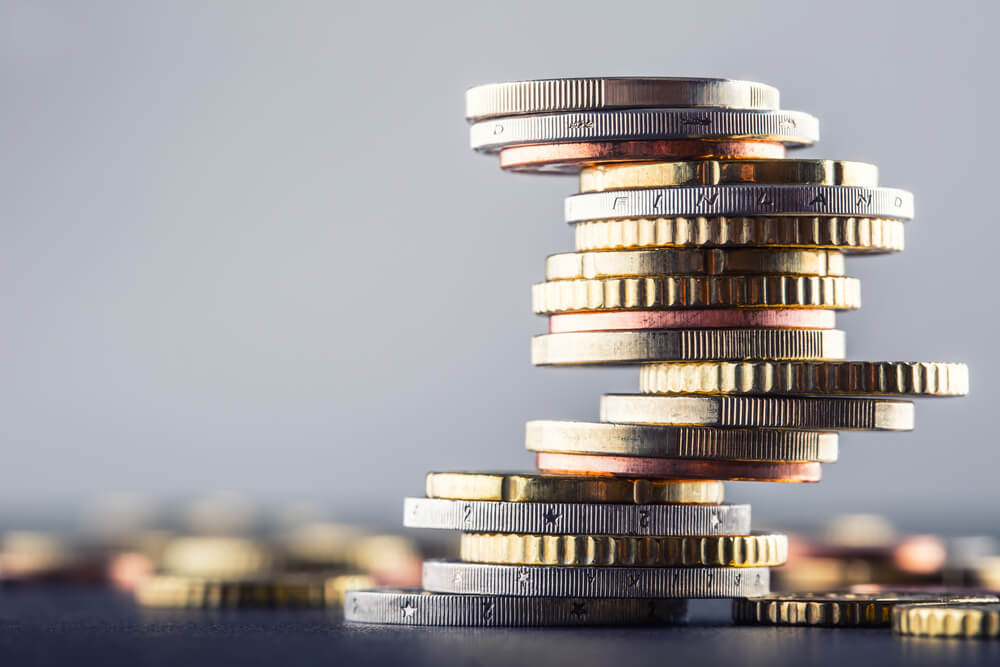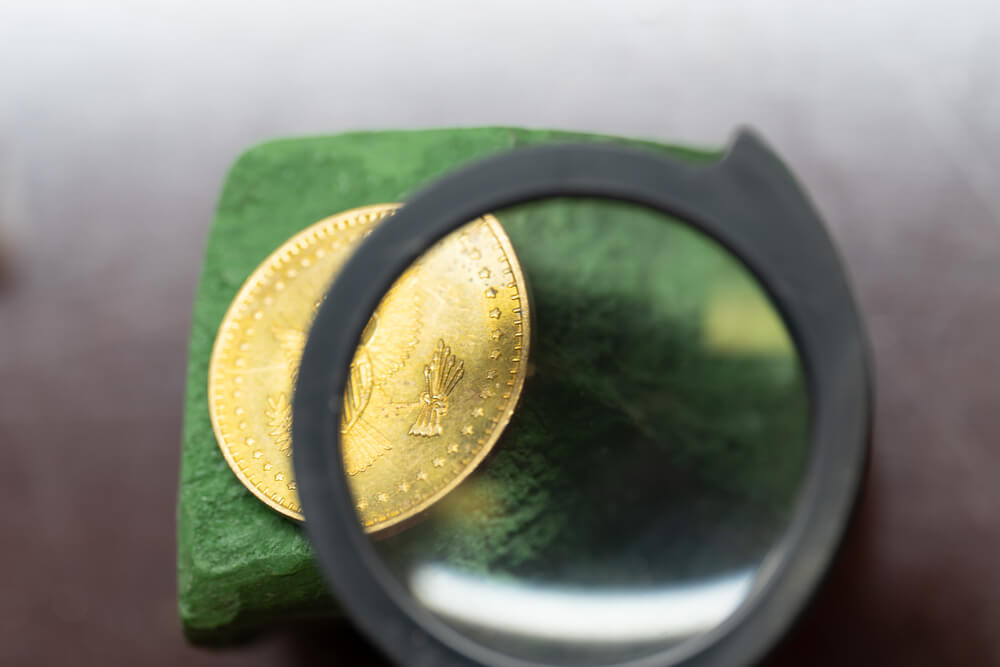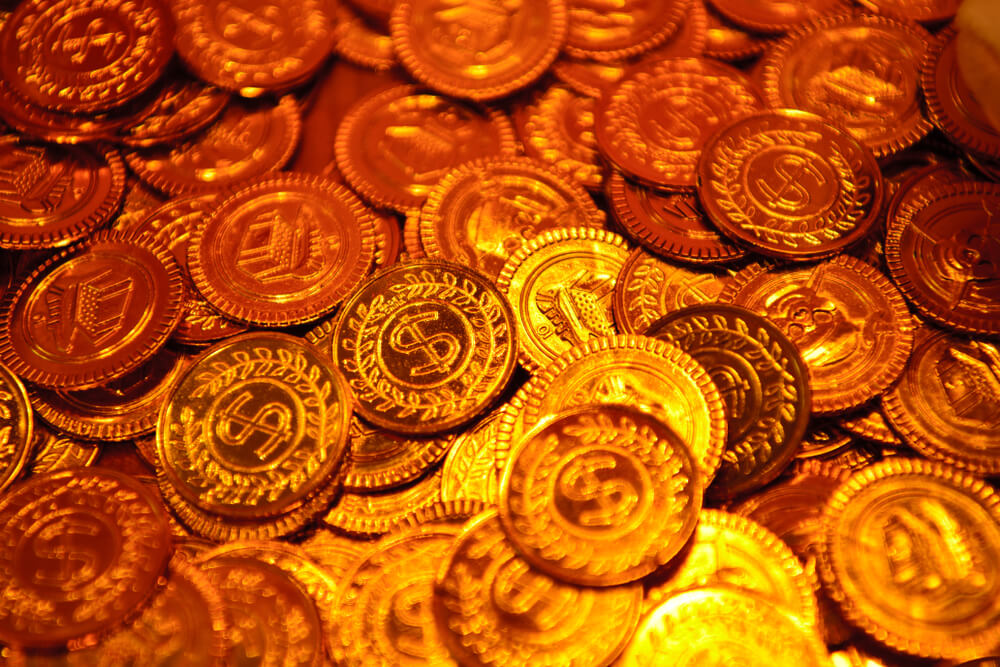
How Much Does Coin-Grading Cost?
Currency coins are usually worth their face value or melt value. But some coins could merit more than that. If you know a thing or two about coin collecting, deducing the approximate value of the currency may not be very difficult.
But if you inherited a coin or accidentally found one you have zero knowledge about, ascertaining its correct value will be challenging, to say the least. That is where professional coin grading services come in.

Currency coins are usually worth their face value or melt value. But some coins could merit more than that. If you know a thing or two about coin collecting, deducing the approximate value of the currency may not be very difficult.
But if you inherited a coin or accidentally found one you have zero knowledge about, ascertaining its correct value will be challenging, to say the least. That is where professional coin grading services come in.
Table of Contents
What is Coin Grading?
Coin grading is independent, third-party testing of a coin for its condition, quality, and authenticity. If you own an obscure currency and would like to know how much is its current worth, coin grading services will be of assistance. The grading process determines a coin’s value based on age, historicity, rarity, condition, etc.
You can break down the coin grading process into the following stages:
- Receipt: The grading service receives the coin arrived for certification. If there is more than one coin in a package, the coins are counted and verified for zero discrepancies. After the verification, coin details get inputted into a database ready for grading.
- Grading: Several professional graders examine the coin(s) for authenticity and physical condition. The various graders assess the coin’s strength, strike, visual appeal, and toning. They also look for marks and other abnormalities. Once the grading is done, a Sheldon Grading Scale score is assigned to the coin(s).
- Encapsulation: The graded coin(s) is encapsulated with unique labels that indicate the coin’s date, mintmark, and denomination. Grading-specific information includes the grading service’s emblem or embossment, unique identification number, and the assigned grade.
- Packaging: After encapsulation, the coin is passed along for its final inspection before shipping. The inspection process entails comparing the coin’s grading information to the details submitted by the customer. In addition, a final round of checking is done to identify any scuffs, scratches, or other flaws that may have gone unnoticed. Once everything is clear, the coins are marked ready for their trip back home.
Here is a video showcasing how NGC goes about grading coins:
Do note coin grading isn’t a purely scientific process. Although systems and methodologies are employed, the grades basically signify the collective opinion of numismatists and coin dealers based on a standard definition.
Read more: Most Valuable Gold Coins
The Coin Grading Scale
Coins are graded using the numeric 70-point Sheldon scale introduced by Dr. William Sheldon in 1949. Before that, coins were graded “new” or “used”. After the Sheldon scale, the finer details of the currency were appreciated and appraised
So, how does the Sheldon grading scale work? Once a coin is graded, it’s assigned an abbreviation that signifies its condition. If the coin is in mint condition or scores anywhere between 60 to 70 points on the scale, it’s a mint state (MS) coin. Below is a table with the Sheldon scale numbers and what they mean:
| Scale Number | Grade (code) |
| 60 to 70 | Mint State (MS) |
| 59 to 55 | Choice About Uncirculated (AU+) |
| 54 to 50 | About Uncirculated (AU) |
| 49 to 45 | Choice Extremely Fine (EF+) |
| 44 to 40 | Extremely Fine (EF) |
| 39 to 30 | Choice Very Fine (VF+) |
| 29 to 20 | Very Fine (VF) |
| 19 to 15 | Choice Fine (F+) |
| 14 to 12 | Fine (F) |
| 11 to 10 | Choice Very Good (VG+) |
| 9 to 8 | Very Good (VG) |
| 7 to 6 | Choice Good (G+) |
| 5 to 4 | Good (G) |
| 3 | About Good (AG) |
| 2 | Fair (F) |
| 1 | Poor (P) |
A solid score of 70 means the coin is in flawless condition, with no imperfections or hairline scratches to show. P (poor) grade, on the other hand, signifies a heavily worn, but still discernible coin. A P-graded currency is usually barely recognizable, or the design is completely flat in most parts.
A few key points to note:
- Some coins may have been unevenly pressed originally, which usually doesn’t negatively impact the coins’ grades.
- Based on the coin’s striking standard and design, the grading company may tolerate the missing elements more than others.
- Extremely mint coins could also be referred to as Brilliant Uncirculated (BU) or Uncirculated (Unc.).
Sub-Grading
Two coins with the same grade may not be of the same condition. Therefore, some grading companies append signs or symbols to the grade to divulge further information about the coin’s quality and status.
For example, NGC attaches the “+” and “ê” designations to differentiate a higher quality “Very Fine” coin from a coin that barely earned the “VF” grade.
Also, as mentioned in the table above, the grade score range for Mint State is pretty broad. Therefore, to differentiate between MS-68 and MS-60, additional adjectives may get added to the description. For example, MS-60 could be described as “Mint State Basal” and MS-65 as “Mint State Choice”.
Similarly, MS-63 is “Acceptable”; MS-68 is “Premium Quality”; MS-69 is “Almost Perfect”; and MS-70 is described as “Perfect”.
Factors Determining Coin Value During Grading
A coin’s color, luster, attractiveness, and strike are factors considered when grading a coin. But perhaps the most significant attributes determining value are the coin’s rarity and condition.
Contrary to general perception, an ancient coin is not necessarily valuable, mainly if there are more of its kind freely available. A rare coin is usually one that was minted in fewer numbers. Coins with minting errors are rare and, therefore, more valuable.
And if the coin is inherently valuable, its physical condition could knock off or add a few hundred dollars to several hundred to the final estimated price.
Kindly note that a graded coin doesn’t guarantee a specific minimum price. It’s entirely possible for a coin with an average grade to sell for a higher price than a coin assigned a mint grading. It all depends on the kind of coin. A relatively rare 100-year-old coin would sell for a much higher price than a coin that’s in mint condition but only a few decades old.
If the two coins are the same and made in the same year but not in similar physical states, the one in the mint condition would command a higher value than the one with signs of wear and tear.
The Significance of Grading Coins
If there are two identical coins–one graded and the other not graded–the graded coin’s market value will be higher.
A graded coin also means zero doubts about its authenticity and quality, particularly when the coin has a reputed grading company’s stamp. With so many fake coins freely circulating, grading affords the assurance buyers look for in a potential coin. The grading helps identify the currency, too, even if it is in the most dilapidated condition.
The other benefit of coin grading is the airtight packaging they come in after grading, which helps safeguard and maintain the coin’s condition.
Coin Grading Service Providers

The Professional Coin Grading Service (PCGS) and Numismatic Guaranty Corporation (NGC) are the top coin grading firms around, with coins graded by the two companies tend to bag the highest prices at an auction. Though there are other grading services, none come close to the cachet and trustworthiness PCGS and NGC tag along.
Founded in 1986 and headquartered in California, PCGS grades more than 100,000 coins a month. It was the first third-party grading service to encapsulate graded coins in an airtight, plastic container called “grading holders”. Earlier, graded coins had no standard wrapping and got easily damaged when shipped back to their rightful owners. The Florida-based NGC, set up in 1987, also uses holders.
Both PCGS and NGC have played a pivotal role in streamlining the coin grading space and lending it more credibility. Before them, people didn’t take coin grades at face value or resorted to measures that helped verify the grading.
ANACS (ANA Certification Service), founded in 1972, is another third-party grading service. Although the company was around for more than a decade before PCGS and NGC came along, it is no longer as reputable as several years ago.
Sending in Coin(s) for Grading
After selecting a professional coin grading service of your choice, sign up for their membership and download the coin submission form from their website. Fill in all the coin details, your postal address, shipping method preference, insurance, service level, etc.
Next, mail the form and the coin. The grading company will get to work once it receives the coin(s), paper, and payment. It could take anywhere between a few days to weeks for the grading process to complete.
Here is a PCGS video that illustrates the processes a coin goes through when received by the grading facility:
Receiving the Graded Coin
Once the coin’s graded, it will be shipped back to you in an airtight, plastic seal. The grading holder will have the grader’s name mentioned, grade value, and other pertinent coin details.
If you are not happy with the grading service or detect some irregularities with the coin, notify the grading company within a day or two (usually up to 5 days) of receiving the coin. Any complaints raised after that may not be entertained.
The Costs of Coin Grading
The coin grading process entails time, effort, and resources. Therefore, the service is never offered free, even if the grading company is the potential buyer. So, how much does it cost to get a coin graded?
A grading firm, like PCGS or NGC charges by the coin. The grading fee is usually less than $50 a coin. However, the coin grading costs may increase based on the purported value of the coin.
A coin’s specific attributes can influence grading costs too. PCGS charges $17 for grading a coin dated 1965 and later, and the coin should not be more than $300 in market value. Coins up to $2,500 in value would cost $35 to grade. Coins with minting errors and not more than $10,000 in value will cost $65 per coin for grading at PCGS.
Coin grading takes time, usually several days and weeks, which affects the grading cost. The quicker the service, the higher the grading costs. For specifics, contact your grading service provider. PCGS has its service fees neatly laid out here. NGC has a similar fee breakdown page too.
Note: The grading fee is inclusive of shipping and insurance costs.
Membership Services
If you are into coin collecting and have multiple coins worth grading, sign up for a membership with the grading company. Based on the tier you select, your annual membership costs would be less than $100 or more than a couple hundred dollars.
PCGS, for instance, offers three levels of membership: Silver ($69), Gold ($149), and Platinum ($249).
You don’t get free coin grading services with those memberships, but your grading costs per coin come down considerably. You’ll also receive a few other perks, such as access to privileged services and members-only events and information, and complimentary grading services.
NGC also offers membership services: Free; Associate ($25); Premium ($149); and Elite ($299).
Read more: What is a Proof Coin
Conclusion
Coin grading isn’t a modern vocation. It has been around as a viable service for decades, even before Dr. Sheldon devised his Sheldon scale. However, the art of coin grading and third-party grading services has recently gained prominence due to the proliferation of ancient coins and the increasing popularity of the coin collecting hobby.
That said, not every coin part of your collection is worth or warrants grading, particularly if you have a clear idea of what the coin’s worth. Grading will not automatically boost the coin’s price. Most likely, grading a currency that’s not worth evaluation will only increase your costs of coin ownership.
And even if you have obscure pieces in your collection, don’t send them in for grading right away. Research about them online and get a rough idea of what you’re dealing with. If grading the coin feels worthwhile or the coin’s maximum value far outweighs the costs, send out the coin for professional grading only then.
FAQs
When not to get a coin graded?
If the coin is relatively modern, familiar, in good physical condition, and low-value, getting the coin professionally graded would be a waste of time and money. Instead, search online to learn about the coin’s price and other details.
Can you regrade a coin?
If you’re not happy with the grading assigned to your coin(s), you can choose to get it graded again at another grading service provider. However, it is up to the company to decide if your coin’s worth a revaluation or if the current grading is correct.
Before contesting a grade, find out why the original grader assigned your coin the specific status. Learning more about the grading factors or the original grader’s parameters will help decide if a regrade is worth the time and money.
When does a company deny grading a coin?
If a coin is relatively new or found in abundance, grading it may not be worth your and the grader’s time. But then, some old coins could also be deemed not worthy of a professional evaluation.
The grading service provider may choose not to grade the piece if the coin’s surface is damaged or altered, is artificially toned, has significant marks, etc. Fake coins will not be graded.
Do coin grading companies evaluate only gold coins?
No, all kinds of numismatic coins made of different metals are eligible for professional grading. Here is a complete list of coins PCGS is open to grading. Since the list is not exhaustive, contact the grader if your coin is not there on the list.
Steel coins are usually not graded since they are pretty run-of-the-mill or have no numismatic value.


